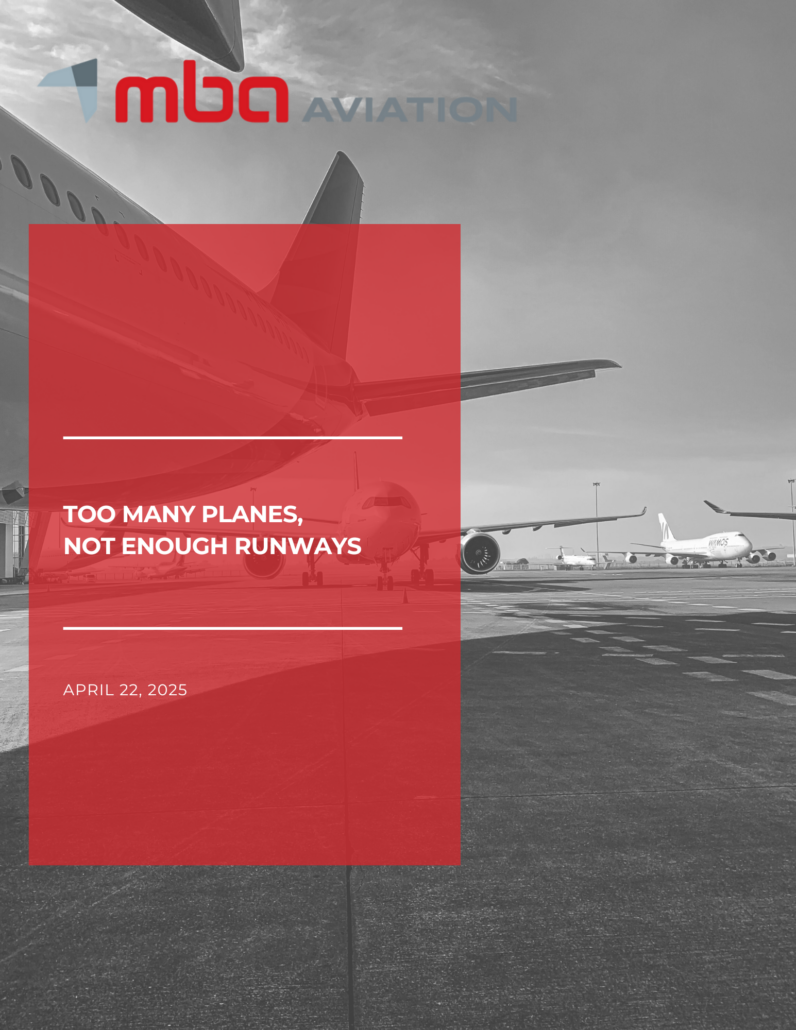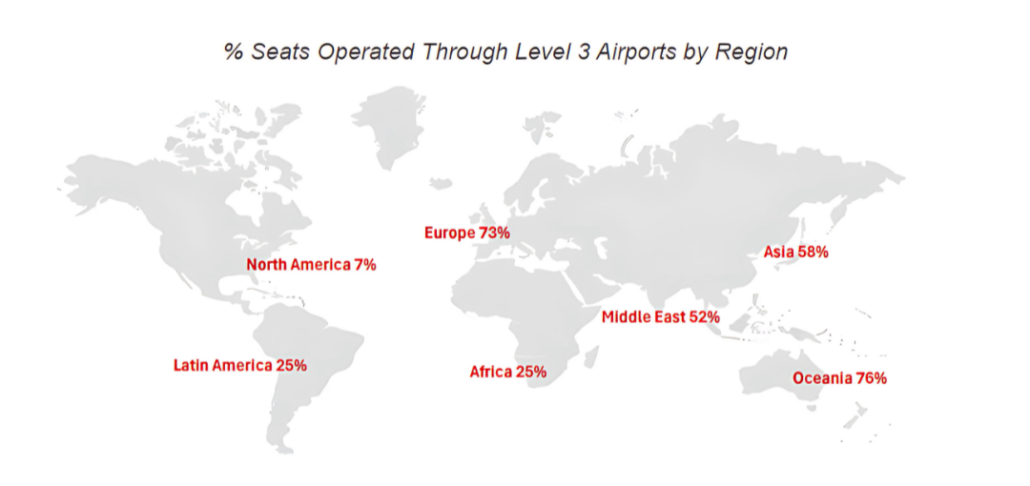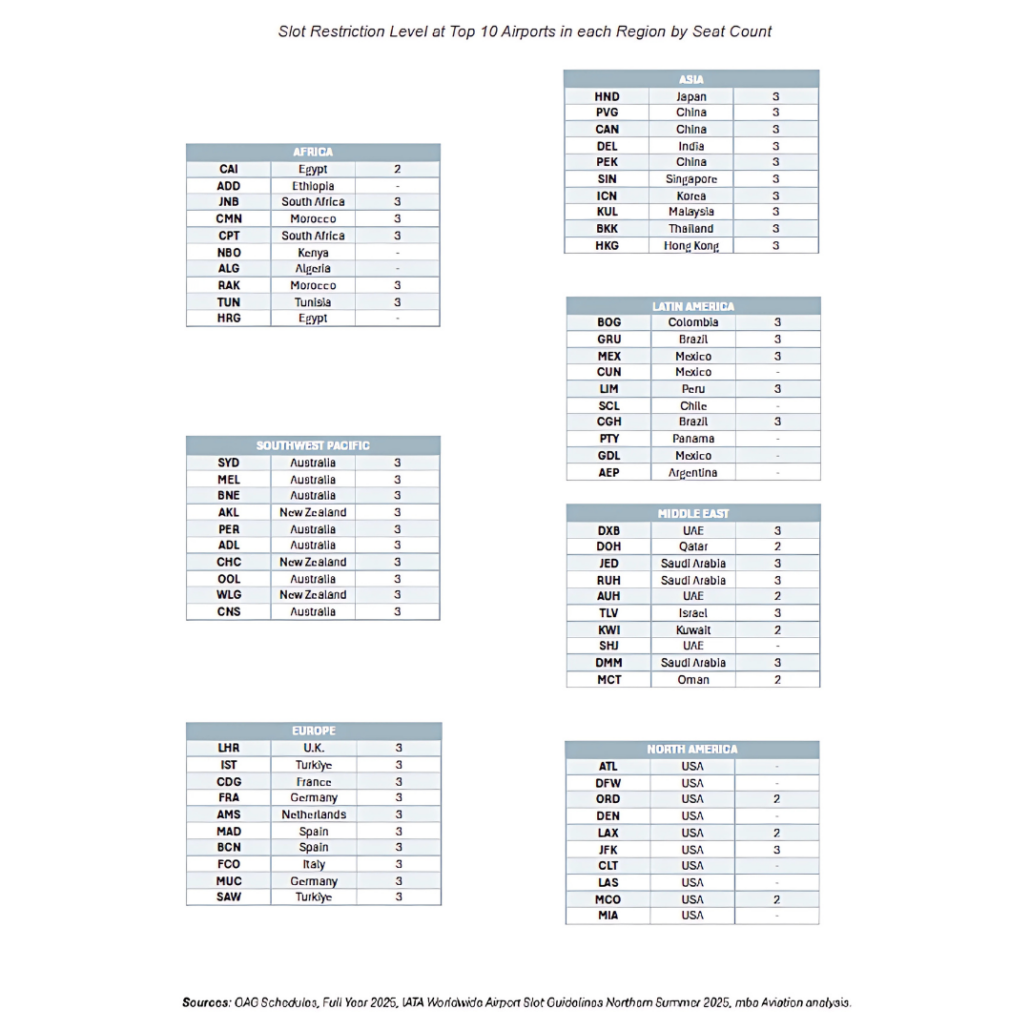
April 22, 2025
Too Many Planes, Not Enough Runways
mba Airline and Airport Services
Supply constraints are a persistent challenge in aviation. Airlines continue to face headwinds with aircraft delivery delays, labor shortages, MRO (maintenance, repair, and overhaul) backlogs, and infrastructure congestion. During United Airlines’ earnings call last week, CEO Scott Kirby specifically pointed to airport capacity constraints in international markets as a long-term concern.
Airports where demand consistently exceeds available capacity are classified as Level 3 by the International Air Transport Association (IATA). These airports require slot coordination for takeoffs and landings. As of the Summer 2025 season, 215 airports worldwide fall into this Level 3 category. Airports with periodic congestion–during certain hours, days, or seasons–are classified as Level 2, with 171 airports currently holding that designation.
In 2025, it is estimated that:
- 46% of global airline seats are operated through Level 3 airports, and
- An additional 15% are through Level 2 airports.
Regions like Europe and parts of Asia face particularly tight constraints due to dense urban environments, land limitations, and regulatory hurdles that inhibit airport expansion. In contrast, while congestion exists in Latin America, Africa, and Southeast Asia, many airports lack the formal coordination frameworks to be designated Level 3. In North America, high demand exists as well, but U.S. airports generally benefit from greater physical space and runway capacity, reducing the need for full slot coordination.
Importantly, slot scarcity is only one aspect of the broader infrastructure challenge. Airlines must also contend with runway and terminal limitations, airspace congestion, and the long lead times associated with building or expanding airports.
In this context, United and other carriers are right be concerned about long-term airport supply constraints. Strategic network planning must continue to account for these limitations as airlines seek to grow and preserve access to high-volume markets.



